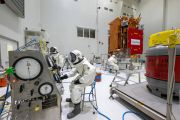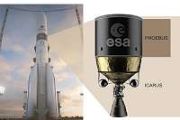Displaying items by tag: OCO 2 spacecraft
Orbiting Carbon Observatory-2 (OCO-2)
The Orbiting Carbon Observatory-2 (OCO-2) is an Orbiting Carbon Observatory planned to be launched in July 2014.
Its based on the original OCO mission (NASA) that failed to reaching injection orbit, on February 24, 2009, due to a launch vehicle anomaly.
OCO-2 is comprised of a single instrument that flies on a dedicated spacecraft. The instrument, consisting of three high resolution grating spectrometers, will acquire precise measurements of atmospheric CO2. The OCO-2 spacecraft bus, developed by Orbital Sciences Corporation, is primarily based on the LeoStar-2 bus design and architecture used for the OCO, Solar Radiation and Climate Experiment (SORCE), and Galaxy Explorer (GALEX) missions.
The Observatory will be launched from the Vandenberg Air Force Base in California on a dedicated Delta II rocket in July 2014. The Observatory will acquire data in three different measurement modes. In Nadir Mode, the instrument views the ground directly below the spacecraft. In Glint Mode, the instrument tracks near the location where sunlight is directly reflected on the Earth's surface. Glint Mode enhances the instrument's ability to acquire highly accurate measurements, particularly over the ocean. In Target Mode, the instrument views a specified surface target continuously as the satellite passes overhead. Target Mode provides the capability to collect a large number of measurements over sites where ground based and airborne instruments also measure atmospheric CO2. The OCO-2 Science Team will compare Target Mode measurements with those acquired by ground-based and airborne instruments to validate OCO-2 mission data.
The Observatory has a planned operational life of 2 years.
































